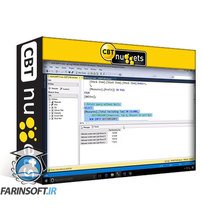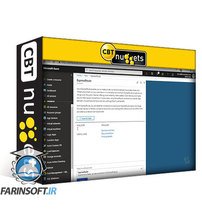جمع جزء: 189,000 تومان
- × 1 عدد: Flutter Riverpod 2.0 App Sqlite & Notification - 189,000 تومان
This intermediate Azure Database Administrator Associate training prepares database administrators to take the DP-300 exam, which is the one exam required to earn the Microsoft Certified: Azure Database Administrator Associate certification.
If you and your organization work with cloud-based applications, you've almost certainly heard of Azure. Microsoft's cloud computing service was custom built to make building, testing, deploying, and managing cloud-based apps and services as easy as possible. For database administrators, knowing how to incorporate your organization's apps and services with data sources all over the cloud can be the difference between keeping your job and failing.
در این روش نیاز به افزودن محصول به سبد خرید و تکمیل اطلاعات نیست و شما پس از وارد کردن ایمیل خود و طی کردن مراحل پرداخت لینک های دریافت محصولات را در ایمیل خود دریافت خواهید کرد.

-main-resized.jpg)
آموزش AZ-801: پیکربندی خدمات پیشرفته Hybrid Windows Server
--Configure-Enterprise-Campuses-with-DNA-Center-Workflows-main-resized.jpg)
آموزش کامل 350-401 ENCOR : پیکربندی با استفاده از DNA Center Workflows

آموزش کامل و کاربردی MDX و DAX در مایکروسافت SQL

آموزش پیشرفته راه اندازی و مدیریت شبکه های مجازی با Azure
-main-resized.jpg)
فیلم یادگیری کامل Cisco CCNP Automating Enterprise Solutions (300-435 ENAUTO)

آموزش مدیریت سرورها
--Automating-Devices-with-the-RESTCONF-Protocol-main-resized.jpg)
آموزش کامل 350-401 ENCOR : اتومات کردن سخت افزارها با پروتکل RESTCONF

مرکز داده حرفه ای JN0-681, JNCIP, DC

آموزش AZ-800: مدیریت زیرساخت های Hybrid Windows Server

AWS Certified Advanced Networking – Specialty (ANS-C01) Online Training
✨ تا ۷۰% تخفیف با شارژ کیف پول 🎁
مشاهده پلن ها